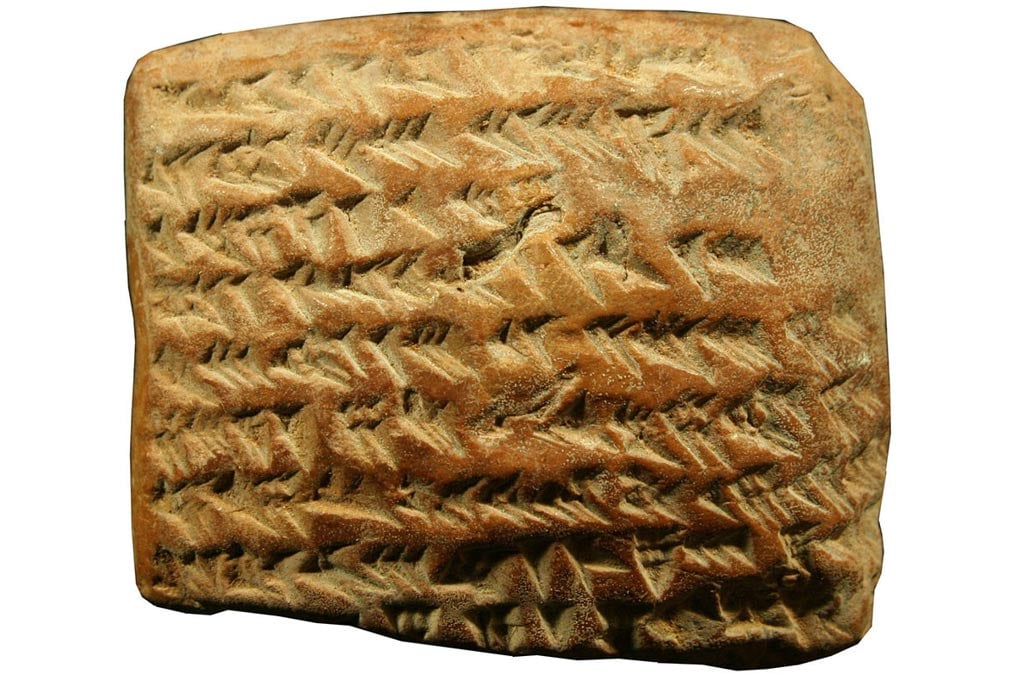Clay Tablet Reveals Ancient Babylonians Used Calculus to Track Jupiter 1,500 Years before Europeans
A new analysis of a set of ancient clay tablets has revealed that ancient astronomers of Babylonia used advanced geometrical methods to calculate the position of Jupiter – a conceptual leap that was previously thought to have occurred in 14 th century Europe.
In a report published today in the journal Science, it was revealed that the ancient tablets containing the secret knowledge of the Babylonians, which date from 350 BC to 50 BC, had laid unnoticed in the cuneiform collection at London’s British Museum for decades. It was not until Astroarchaeologist Mathieu Ossendrijver of Humboldt University in Berlin conducted a reanalysis of the tablets from photographs, that the significance of the text was realized.
Babylonian Astronomy
The history of astronomy in Babylonia (present-day Iraq) originated with the Sumerians who recorded their observations as early as 3500–3200 BC. Astronomical phenomena were important to the Sumerians, who equated planets with gods that held an important role in their mythology and religion. Jupiter, for example, was associated with their main god, Marduk, patron deity of the city of Babylon.
Sumerian astronomy had an important influence on the astronomy of the Babylonians, who produced their first star catalogues by around 1200 BC.
By the 8 th century BC, Babylonian astronomers had developed a new empirical approach to the prediction of planetary movements, an approach that was later adopted and further developed by the ancient Greeks.

Astronomical phenomena were important to the Babylonians. Kudurru (stele) of King Melishipak I (1186–1172 BC): the king presents his daughter to the goddess Nannaya. The crescent moon represents the god Sin, the sun the Shamash and the star the goddess Ishtar. (public domain)
Astronomical Calculations in Babylonia
Studies of their textual records found on clay tablets in cuneiform text, suggested that the Babylonian astronomers were using purely arithmetic methods to make their calculations and predictions. However, one of the tablets in the newly analyzed collection, made reference to a trapezoid shape while discussing Jupiter.
Ossendrijver discovered that the trapezoid drawing was being used to predict Jupiter’s place in the zodiac. The computations covered a period of 60 days, beginning on a day when Jupiter first appeared in the night sky just before dawn.
“By calculating the area inside the trapezoid, Babylonian astronomers could find where the planet would be in the sky – exploiting the same link between velocity and displacement taught in introductory calculus classes,” reports New Scientist. This constitutes the only known geometrical method used in Babylonian astronomy, a method thought to have been invented only in 14 th-century Oxford, Cambridge.
Historian Alexander Jones of New York University told ScienceMag that compared with the complex geometry embraced by the ancient Greeks a few centuries later, the Babylonian inscriptions reflect “a more abstract and profound conception of a geometrical object in which one dimension represents time. Such concepts have not been found earlier than in 14th century European texts on moving bodies. Their presence … testifies to the revolutionary brilliance of the unknown Mesopotamian scholars who constructed Babylonian mathematical astronomy.”

The Babylonians used geometric methods to predict Jupiter’s place in the zodiac (public domain)
Back in 1974, historian A. Aaboe, said in his article ‘Scientific Astronomy in Antiquity’ that Babylonian astronomy was:
"the first and highly successful attempt at giving a refined mathematical description of astronomical phenomena" and that "all subsequent varieties of scientific astronomy, in the Hellenistic world, in India, in Islam, and in the West—if not indeed all subsequent endeavour in the exact sciences—depend upon Babylonian astronomy in decisive and fundamental ways."
The latest study certainly supports Aaboe’s conclusion over three decades ago, revealing that Babylonian astronomy has made an extremely important contribution to the history of science.
Featured image: The Clay Tablet that reveals the Babylonians were using calculus to track the path of Jupiter. Credit: Trustees of the British Museum/Mathieu Ossendrijver.




















Comments
Hello, i cannot understand the video provided of just how they watched jupiter, can there be a more detailed mathematical message here, in lehman's terms also please.
Thank you,
Joe S
bc Michigan